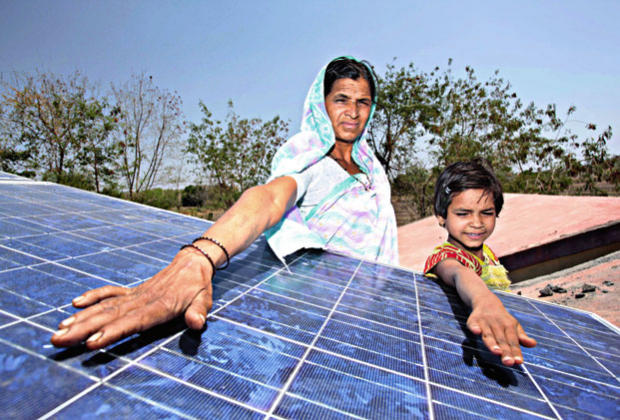No matter what we do now, we’ve already baked in increasingly severe consequences from a warming climate. That said, if we do nothing and stay on the trajectory upon which we are currently headed, the future of our civilization is in extreme jeopardy. As it stands right now, we will unquestionably have to adopt to some changes but by being proactive to the extreme we can minimize the impacts and possibly reverse the damages we are currently, and in the future, causing.
No single action will be able to help save our future. It will take success on multiple fronts simultaneously. And I used to disregard the idea of our being able to actually suck CO2 out of the atmosphere as a pipe dream. Thank goodness others have had a different perspective because, it is seeming like this prospect is actually becoming closer to reality.
Earlier this year on June 16th, I wrote:
“we need to promote the R & D in any way possible especially with government incentives. That seems unlikely under the current Administration but this one won’t be here forever so we need to be debating and designing these alternative measures now so that we can enact them as soon as the “climate” is right for doing so as part of a comprehensive endeavor to save the planet’s climate that supports our civilization.”
The post in which this was written described a project to decarbonize the atmosphere entitled “Can We Develop DAC (Direct Air Capture) Technology to Help Save the Planet? Not Without Help” (can-we-develop-dac-direct-air-capture-technology-to-help-save-the-planet-not-without-help).
As a follow up to that, the following article relates that this technology is actually going to be deployed.
“Now a company Keith founded—Carbon Engineering, in Squamish, B.C.—is working to turn those engineering estimates into reality. It’s preparing to construct a plant that’s designed to remove 1 million tons of CO₂ from the atmosphere annually. It will be by far the world’s largest, offsetting the emissions of 250,000 cars. The company announced the million-ton plan in September, just months after saying its goal was a half-million tons a year.”
“Construction is scheduled to begin in 2021 and finish in 2023. If it works, Keith’s company intends to roll out hundreds and eventually thousands of identical plants all over the world.”

Furthermore, like all the other technologies, the costs are dropping dramatically from $550 a metric ton to $94. And that’s today. Think what continued advancements will develop! The article describes this.
In conclusion,
“emissions reduction alone won’t be enough to stop the planet from heating up. Some emissions will continue for decades…It’s a race between chemistry and time. In 2015 the National Research Council issued a report estimating it could take 30 years before direct air capture removes 1 billion tons a year, and it might never get as high as 10 billion tons a year. For comparison, the combustion of oil, gas, and coal worldwide last year generated about 34 billion tons of carbon dioxide, according to the 2019 BP Statistical Review.
But hey, you have to start somewhere. “Time is against us,” says Global Thermostat’s Chichilnisky. “We need to be building plants.”
No one thing is going to save the planet. We need to use every tool we can. It now appears that there will be multiple technologies developed to reverse the buildup of CO2 and help us survive and keep a healthy planet capable of sustaining our civilization in some semblance of its current state. This is just one encouraging example…
A Once-Iffy Form of Carbon Capture Is Getting a Lot Better
Companies appear to be working faster than expected to commercialize a controversial climate weapon.
Peter Coy
December 18, 2019

Halting global warming by sucking carbon dioxide out of the air strikes many people as a dumb idea. It’s complicated and energy-intensive. Why not focus on keeping more greenhouse gases out of the atmosphere in the first place—say, by installing more solar and wind power? Stanford engineering professor Mark Jacobson told the Israeli newspaper Haaretz in early December that “carbon capture is the Theranos of the energy industry,” referring to the company that built false hopes for blood diagnostics
Some critics even argue that “direct air capture” of CO₂ is a form of greenwashing—i.e., putting a gloss of environmentalism on the dirty business of hydrocarbon production. They point to the involvement of oil companies Chevron, Exxon Mobil, and Occidental Petroleum, which intend to use captured CO₂ to recover more oil from their fields.
The companies leading the commercialization of direct air capture—Carbon Engineering of Canada, Climeworks of Switzerland, and Global Thermostat of the U.S.—say the technology is meant to supplement, not replace, shifts toward solar and wind power. They reject the charge of greenwashing, saying the use of CO₂ in oil fields is a transitional step in the decarbonization of the global economy. One long-term plan is to inject the captured gas into basalt rock formations to remove it from the atmosphere.

Most important, the companies are trying to prove that direct air capture can be cheap enough to be deployed widely and soon. An influential study published in 2011 by the American Physical Societyestimated it would cost $550 to capture a metric ton of carbon dioxide using one leading method. But in 2018, Harvard applied physicist David Keith and others wrote an article for the journal Joule explaining how it could be done for $94 to $232 a ton using inexpensive, off-the-shelf components.
Now a company Keith founded—Carbon Engineering, in Squamish, B.C.—is working to turn those engineering estimates into reality. It’s preparing to construct a plant that’s designed to remove 1 million tons of CO₂ from the atmosphere annually. It will be by far the world’s largest, offsetting the emissions of 250,000 cars. The company announced the million-ton plan in September, just months after saying its goal was a half-million tons a year.
Carbon Engineering’s plant will be built at an undisclosed location in the Permian Basin of Texas in cooperation with a unit of Occidental, which will use the captured gas for oil recovery. (Chevron, Australian mining giant BHP Billiton, and Microsoft co-founder Bill Gates are among the company’s other investors.) Construction is scheduled to begin in 2021 and finish in 2023. If it works, Keith’s company intends to roll out hundreds and eventually thousands of identical plants all over the world.

Chief Executive Officer Steve Oldham says in a video on Carbon Engineering’s website that the plant will remove CO₂ at a cost of $100 to $150 a ton. He’s been more cautious recently, saying in an interview only that the cost will come in under $200.
The other two principal carbon-capture companies are also trying to scale up. Zurich-based Climeworkshas 14 small plants in operation in Europe. The biggest, in Switzerland, captures 900 tons of CO₂ a year from the atmosphere at a cost of $600 a ton. It has plans to get down to $200 a ton in three to four years and to $100 by 2030. New York-based Global Thermostat aims to suck up 2,000 tons of the gas each year at a plant it’s building in Tulsa. Peter Eisenberger, former head of physical sciences at Exxon Mobil Corp.’s research and development department, is its chief technology officer; Graciela Chichilnisky, an economist at Columbia, is the CEO.
There’s no question that direct air capture is relatively high-hanging fruit. Even if the cost reductions are achieved, it will still be more expensive than cutting back on emissions. And it’s costly vs. other “negative emissions” alternatives: Planting trees costs $15 to $50 per ton of carbon dioxide removed, according to a recent study by the National Academies of Sciences. Capturing CO₂ from concentrated sources, such as flue gases of power plants, is also cheaper than grabbing it out of plain air, where it makes up only four molecules out of every 10,000.
So why pursue it? Because emissions reduction alone won’t be enough to stop the planet from heating up. Some emissions will continue for decades—battery-powered passenger jets remain a remote prospect, for example. As for negative-emissions technologies, there’s not enough room for all the forests we’d need to plant to stop global warming. Ditto for croplands for growing biomass for fuels. And equipping smokestacks to capture carbon won’t be enough, as half of all emissions come from less concentrated sources.
Direct air capture is workable because CO₂ is an acid, meaning it reacts strongly with various bases to form salts. Carbon Engineering will use fans to drive air through plastic sheets dripping with potassium hydroxide, producing a salt, potassium carbonate. In a second loop of the process, the potassium carbonate will react with calcium hydroxide to form pellets of calcium carbonate. Those pellets will get broken down in a high-temperature furnace into calcium oxide (lime), which can be mixed with water for use in more reactions, and CO₂, which can then be used to put fizz in soda, turned into a fuel, or stored underground.
It’s a race between chemistry and time. In 2015 the National Research Council issued a report estimating it could take 30 years before direct air capture removes 1 billion tons a year, and it might never get as high as 10 billion tons a year. For comparison, the combustion of oil, gas, and coal worldwide last year generated about 34 billion tons of carbon dioxide, according to the 2019 BP Statistical Review.
But hey, you have to start somewhere. “Time is against us,” says Global Thermostat’s Chichilnisky. “We need to be building plants.”
Read more: We Already Have the World’s Most Efficient Carbon Capture Technology and An Energy Breakthrough Could Store Solar Power for Decades


